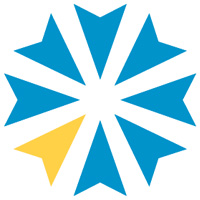
Midwifery / Childbirth Continuing Education Course Bundle #7 (13.5 Hours)
This is a series of lectures originally presented at our 2021 GOLD Midwifery Conference. It is suitable for all skill levels and is a perfect fit for Midwives, Doulas, Childbirth Educators, IBCLCs, Breastfeeding Counselors, Physicians, Dietitians and anyone else working or studying within the maternal-child health industry. Gain new insights into prenatal bonding and the epigenetic implications, trauma-informed pelvic care in the time of COVID-19, epilepsy in pregnancy, wound care after caesarean birth, resolving malposition, antenatal testing and so much more. With expert speakers, such as Stephanie Tillman, Ruth Oshikanlu, Nathan Riley, Molly O'Brien, Jenny Gamble and Cecilia Jevitt to name just a few, this conference promises to be an inspiring and practice changing event!


Kim is an advanced clinical practitioner, independent nurse prescriber, registered nurse and registered midwife with additional qualifications in epilepsy, complex pregnancies, child protection, pharmacology, advanced decision making, epidemiology, diagnosis and history taking and research. She is a specialist in antiepileptic drug prescribing management & all aspects of reducing the impact of epilepsy. Since 2000, she has conducted a women with epilepsy service which provides holistic care and treatment support from teenage years to motherhood. In addition, she established and ran for 7 years a thriving community epilepsy specialist nursing service for Southampton and since 2017, a new rapidly expanding secondary care service for Winchester. Kim designed the maternity epilepsy toolkit embedded in the SUDEP (sudden unexpected death in epilepsy) Action professional checklist and focuses professionally and academically on safety and reducing the risk of avoidable adverse outcomes. She is an MBRRACE assessor and represents the Royal College of Midwives on behalf of midwives on the valproate stakeholders committee.
Objective 1: Describe the treatment and optimal preconception management of epilepsy, in preparation of pregnancy.
Objective 2: Discuss risk assessment and prevention strategies to optimize maternal and fetal well-being.
Objective 3: Describe optimal care provision for women with epilepsy in the pregnancy continuum.
Epilepsy is a pre-existing, neurological disease present in 0.3%-0.5% of all pregnancies and is associated with increased risks of morbidity and mortality during the pregnancy continuum. These risks are often determined long before conception. This is because epilepsy and its treatment can impact on: education, employment, safety, menstruation, sexuality, fertility, contraception, pregnancy, breastfeeding, parenting, bone health, mental health, quality of life, driving status and independence. This trajectory and the quality of care received during the epilepsy journey can influence pregnancy presentation and outcome. The extremes can be a woman who has received expert epilepsy care and preconception preparation to ensure the risks were minimized when embarking on a planned pregnancy versus a woman who presents with an unplanned pregnancy having received no counselling, no epilepsy specialist care, prescribed a medication that is high risk to a developing baby whilst having uncontrolled seizures. These extremes highlight the need for maternity healthcare professionals to have awareness about the potential health burden associated with epilepsy, knowledge about seizure presentation and management, information about epilepsy treatments and understanding about potential risks to the women and her developing baby and how to reduce risks during pregnancy through joined-up, holistic, multi-professional healthcare provision.
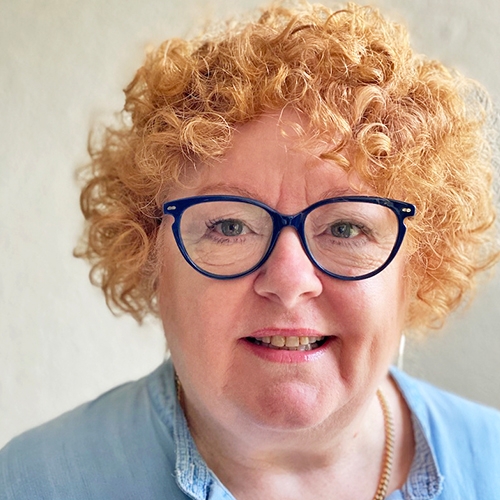

Leonie graduated as a Nurse in 1977, a Midwife in 1980 and a Post Grad Cert in
Higher education in 2012. In 2018 Leonie founded ‘Caesarcare’ offering resources and a self published eBook titled ‘Woman-Centred Caesarean Care’ for women having surgical births.
Leonie also has a special interest in helping women who experience neonatal loss and in 2005, she founded an health promotion charity Pastoral Health Care Network Australia,(PHNA) to assist families living with grief and loss. Her initiative to gift adult comfort shawls to parents after still birth has since been adopted by the Nations SIDS foundation.
Currently Leonie serves Vice president of PHNA and as the Australian College of Midwives Liaison officer at Australian Catholic University.
In 2010 Leonie was recognised for her service to Nursing and duly admitted as a Fellow of
the Royal College of Nursing Australia.
In March 2019 Leonie’s wound splint invention the SAC (surgical after care )splint designed to help women support their c-section wounds was shortlisted for the Australian College of Nursing innovation award during Australia’s National Healthcare Week .Leonie lives in Brisbane Australia and teaches online classes for women preparing for and recovering from C-section births.
Objective 1: Describe the surgical procedure and layers of tissue impacted.
Objective 2: List the complications associated with Caesarean wounds.
Objective 3: Discuss best practice wound care.
Objective 4: List signs of infection (SSI) and or wound breakdown(SSD).
Objective 5: Outline risk factors for Surgical Wound Complications(SWC).
The presentation will describe the Caesarean section procedure and layers of tissue involved in the surgery including the techniques for wound closure. Surgical wound complications (SWC)will be discussed along with characteristics, and diagnostics involved. Best practice wound care, dressings and hygiene will be outlined. The signs and symptoms of wound dehiscence and infections will be described as well as management. Risk factors for delayed healing and SWC’s will be outlined and preventative measures discussed. World trends and statistics for Surgical birth and SWC’s will be highlighted.
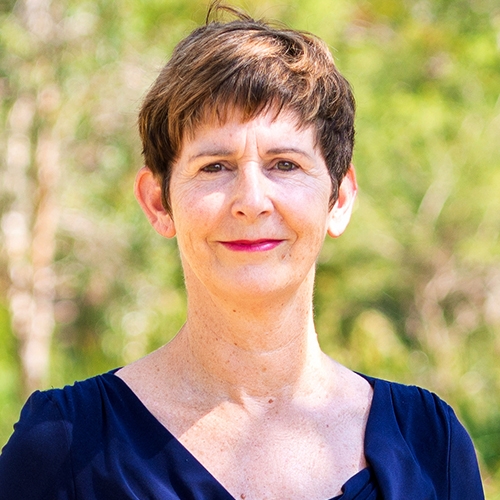

Professor Emeritus Jenny Gamble’s has been a midwife since 1983. She and worked clinically for 17 years in a variety of positions and models of care, several Australian states, and overseas. She has a strong international profile in maternal and newborn research with specific expertise in perinatal mental health. She is a well known for her professional leadership with health services, the midwifery profession and collaboration with consumers.
Objective 1: Discuss the prevalence of fear of birth.
Objective 2: Describe the factors contributing to fear of birth.
Objective 3: Apply a trauma informed process to assess fear of birth.
Objective 4: Explain how to apply evidence-based approaches in working with women fearful of birth.
Objective 5: Discuss health system structural changes needed that may positively impact care for women fearful of birth.
There is growing evidence that fear of childbirth (FOC) is an issue of importance for women’s emotional and psychological well-being. For some women symptoms are severe and disabling. A previous traumatic birth experience, sexual abuse, and traumatic childbirth stories of others and media may contribute to fear of giving birth.
Fear of childbirth has negative implications for women’s experiences of pregnancy and birth including longer labour, increased likelihood of augmentation of labour, emergency caesarean section, and elective caesarean section.
Access to services for women with fear of childbirth appears to be inequitable and various approaches and interventions are used.
Assessment tools are available and readily implemented in practice to identify women fearful of childbirth and the severity of fear feelings, however a trauma informed approach to talking with fearful women is essential to discover the factors related to the fear and the commencement of a therapeutic relationship.
There is some evidence about interventions to help women fearful of childbirth. The webinar will assist midwives and nurses working in maternity know how to respond to fearful women and provide practical information about what to do, what to say and what not to say to support women experiencing fear of childbirth.
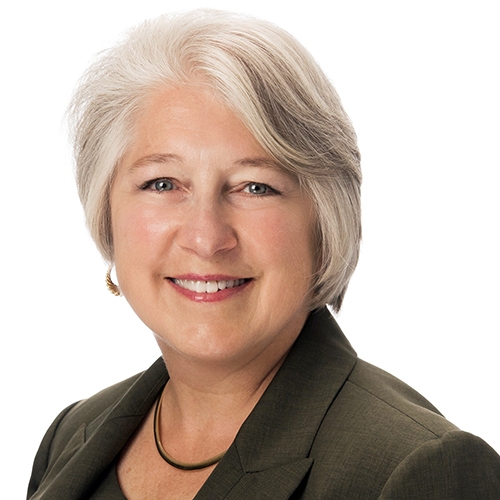

Cecilia Jevitt is the Midwifery Director and a tenured associate professor at the University of British Columbia, Faculty of Medicine. From 2013 to 2018, she directed the Yale School of Nursing’s Midwifery and Women’s Health Nurse Practitioner master’s degree programs. She has done capacity-building teaching and curriculum consultations in Switzerland, Laos, China and Ghana.
Jevitt studied midwifery at Emory University. Her 1993 doctorate in applied medical anthropology is from the University of South Florida. She established an academic division of midwifery with the University of South Florida College of Medicine while jointly appointed to the Colleges of Nursing and Public Health.
She is an elected Fellow of the American College of Nurse-Midwives and is the At Large Member of the FACNM Board. Jevitt was a Florida Nurses Association Great 100 Nurse in 2009, the 2010 Reviewer of the Year for the Journal of Midwifery & Women’s Health, the University of South Florida Department of Anthropology’s Distinguished Alumni in 2012, and a 2014 Connecticut Nightingale Excellence in Nursing Award winner.
Jevitt’s scholarship focuses on perinatal weight gain optimization and integrating obesity prevention and management into women’s health especially the perinatal and lactation periods.
Objective 1: List at least two characteristics of white adipose tissue that may cause maternal and fetal complications during pregnancy.
Objective 2: List at least 6 environmental factors that contribute to obesity.
Objective 3: Define obesity and excessive weight gain during pregnancy.
Objective 4: Describe hormonal pathways altered by obesity that may cause perinatal complications.
Objective 5: List at least 6 measures to ameliorate the effects of obesity on pregnancy, birth, the postpartum period and breastfeeding.
Objective 6: Recite descriptors for obesity that are person-centered and stigma-reducing.
Obesity affects more than 35% of women ages 20-39 in the United States. This presentation will summarize recent research that reconceptualizes obesity as adipose disease associated with smoking; socio-economic disparities in employment, education, health care access, food quality and availability; and environmental toxins, ultimately altering microbiomes and epigenetics. Obesity is an adaptation to an unhealthy environment more than poor individual eating choices. The female fetus forms her lifetime complement of ova during pregnancy; therefore, the effects of obesity may affect three generations in one pregnancy.
Individual prenatal care of women with obesity includes early testing for diabetes, counseling on epigenetic diets, advice supporting weight gain within national guidelines, and vigilance for signs of hypertensive disorders of pregnancy. Intrapartum care includes mechanical cervical ripening measures, patience with prolonged labor and uterotonic medication readiness in the event of postpartum hemorrhage. Postpartum care includes thrombus risk amelioration through early ambulation, use of compression stockings and anticoagulation. Delays in lactogenesis II can be offset by measures to support early breastfeeding. Sociopolitical actions for midwives at national, state and community levels to reduce population disparities in racism, education, employment; reduce pollution from obesogenic chemicals and improvement of food quality and distribution policies will be reviewed.
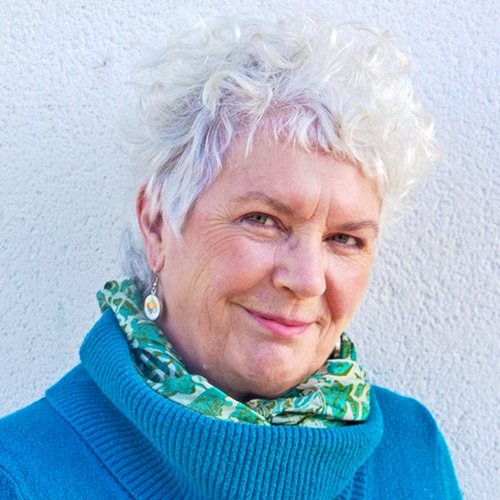

Molly O’Brien is an experienced midwife, with more than 20 years of clinical practice and has attended over a thousand births. She is also a hypnobirth and birth preparation teacher, an associate university lecturer, has created courses for midwives, campaigned for midwife led birth units and been a passionate student and enabler of normal physiological birth. She has worked in all areas of midwifery. Her favorite work was in the home environment and a Midwife Led Birth Unit. It allowed her to attend hundreds of undisturbed physiological births. It also gave her the opportunity to make a systematic exploration of midwifery skills and observations that can help resolve long difficult labours caused by a suboptimal position. The techniques and strategies that emerged from this time helped her revolutionize her own practice. She began to regularly witness dramatic progress as she put them to use in “difficult labours”. Now she teaches the course she developed for Birth Professionals, ‘Biomechanics for Birth’. She also taught for a master's course at the City of London College and runs a 3000 strong Facebook group Biomechanics for Birth for birth and women’s health professionals that carries a lively and informed discussion on a wide range of women's health issues.
Objective 1: Have an improved understanding of pelvic anatomy and physiology.
Objective 2: Recognise impact of current biomedical solutions and common midwifery and obstetric practices that can hinder the birth process..
Objective 3: Use gentle non invasive practices or techniques that may resolve labour dystocia.
In order to resolve labor dystocia in an effective and holistic manner, a deeper understanding of pelvic anatomy and physiology is required. Pelvic dynamics, the mechanical relationship between the pelvis and the rest of the body, and the dynamic interaction of the mother/baby dyad offer the chance to view birth through different eyes. This knowledge can help the health care provider to recognise activities and lifestyles that increase the chances of labour dystocia. Furthermore, this understanding will help providers identify signs of a mechanical disruption during the birth process. This presentation will offer timely techniques and positions, based on the principles of biomechanics, that increase space in the pelvis and avoid medical intervention.


Dr. Karen Lawford (Ph.D., R.M., A.M.) is an Assistant Professor in the Department of Gender Studies at Queen’s University and an Adjunct Research Professor in the School of Indigenous and Canadian Studies at Carleton University. She is a member of Lac Seul First Nation
She is the first registered midwife and Indigenous midwife in Canada to obtain a doctoral degree and hold a university appointment. She advocates for maternity care that allows community members to give birth in their communities and on the land, and has explored the resiliency and resistance of women evacuated from their communities for birth. She also conducts research that examines the leadership of Indigenous women and Two Spirit people within health. She is a founding member of the National Aboriginal Council of Midwives.
Dr. Lawford is a 2020 Indspire Laureate in the category of Health. She also serves as a Senator for Queen’s University.
1. Discuss the history of Canada in relation to Indigenous Peoples
2. Discuss the importance of Indigenous women and Two Spirit community leadership within maternity care services
3. Describe white supremacy and racism within healthcare services
Since the formation of Canada in 1867, the Canadian government has systematically imposed a Euro-Western biomedical model of maternity care on Indigenous peoples. Colonialism and white supremacy rationalized the development of the Indian Residential School system with Christian organizations in attempts to “kill the Indian in the child.” Government goals were to civilize and assimilate Indigenous Peoples into a generic Canadian identity for the sake of nation building and colonial expansion. Eugenic ideologies underpinned the reduction of Indigenous populations through the forced, coercive, and covert sterilization of Indigenous women and girls. In Canada, two provinces had a Sexual Sterilization Act (Alberta and British Columbia), although it was practiced throughout the country. In the area of maternity care, Canadian healthcare systems have consistently failed Indigenous people and their children as evidenced by having highest IMR in Canada. Despite this, Indigenous midwifery and improved child and maternal health for Indigenous people, families, and communities can be realized. A return of birth to the land, recognition of Indigenous women’s and Two Spirit leadership in the provision of excellent culturally-informed, anti-colonial maternity care will contribute to the improved health and wellbeing of Indigenous Peoples.


Stephanie Tillman (she/her) is a midwife at the University of Illinois at Chicago. She completed her undergraduate degree in Global Health and Medical Anthropology at the University of Michigan, and her graduate degree in Midwifery at Yale University. She is on the Boards of Directors of Nurses for Sexual and Reproductive Health (NSRH) and the Midwest Access Project (MAP), is an Advisory Committee Member of the Queer and Transgender Midwives Association (QTMA), and is a member of the ACNM Ethics Committee. She is currently a Clinical Medical Ethics Fellow at the University of Chicago's MacLean Center, where she is focusing on consent in intimate exams. Stephanie blogs under the name Feminist Midwife, and through that online platform, academic and public writing, and professional speaking engagements, seeks to interact with providers and consumers in conversations about consent in health provision, queer care, sex positivity, nurses and advanced practice clinicians in abortion care, and trauma-informed frameworks. Find her on social media @FeministMidwife.
Objective 1: Review current cultural contexts related to safety in gynecologic and obstetric care.
Objective 2: Define trauma-informed care (TIC) and the unique compounding traumas due to COVID-19.
Objective 3: Consider midwifery approaches to creating a safe environment for both patient care and student learning.
Objective 4: Describe complexities of providing TIC during the COVID-19 pandemic.
The framework of trauma-informed care first emerged in the 1990s, proposed by sexual assault survivors as a structure for safe engagement with healthcare institutions and providers. Decades later, this approach to intimate care continues to exist more in theory than in standard practice. Exceptionalized circumstances in obstetrics and gynecology, such as the first pelvic exam, care for patients with a known history of sexual assault, or care for queer communities, often embody the ideals of trauma-informed care that could easily be extrapolated to all care interactions. The importance of intentionality in intimate care, including consent processes as well as physical touch, is all the more critical given publicized cases of providers physically and sexually assaulting patients. Further, as COVID-19 continues to affect individuals and communities worldwide, trauma now touches every person’s life in new and challenging ways. This holds the opportunity to facilitate a connected empathy between patients and providers, and thus a new possibility to integrate trauma-informed care into practice. This presentation will review the framework of trauma-informed care, detail best practices for pelvic care, discuss the impact of COVID-19 on intimate examinations, and challenge providers to modify current practices in order to create safe environments for empowering healthcare experiences.


Dr. Ruth Oshikanlu MBE is a multi-award winning nurse, midwife and health visitor. A nurse entrepreneur, consultant, leader and parenting expert, she is passionate about supporting vulnerable children and their families to reduce health inequalities and improve their life outcomes. Her previous roles include: HIV specialist midwife, Family Nurse at one of the first pilot sites of The Family Nurse Partnership intensive home visiting parenting programme for vulnerable families, and Nurse Leader of The Lewisham Young People’s Health and Wellbeing Service.
Ruth is a Pregnancy Mindset Expert and supports pregnant women who have had assisted conception or previous pregnancy loss. She is the author of Tune In To Your Baby: Because Babies Don’t Come with An Instruction Manual.
Ruth is a Queen’s Nurse, Fellow of The Institute of Health Visiting, Royal College of Nursing and The Royal Society of Arts. She is the recipient of several national healthcare and business awards; a regular columnist and has published several feature articles in numerous national nursing and healthcare journals.
Ruth was appointed a Member of the Order of the British Empire (MBE) in the New Year 2019 Honours List for being an Ambassador for the Health Visiting Profession and for services to Community Nursing, Children and Families. She is a Churchill Fellow and was awarded an honorary doctorate degree from London South Bank University in November 2019.
Topic: Foetal Programming and the Impact of Stress - [View Abstract]
1. Describe the importance of parents connecting with their baby in utero
2. Discuss the use of antenatal attachment scales as a tool to promote antenatal attachment
3. List strategies to support pregnant women and their partners to connect with their baby(ies) in utero
Parental-foetal attachment is the emotional attachment between an expectant parent and their foetus and is a complex concept. Midwives have a vital role in promoting parental-foetal attachment. The presentation will outline the importance of promoting parental-foetal attachment and how expectant parents can connect with their babies in utero. This presentation will discuss how expectant parents have been supported during the pandemic to manage their fear, anxiety and stress, parental and partner separation.
It will conclude with the use of the items of antenatal attachment scales to discuss and suggest ways of promoting antenatal attachment to expectant parents. By collaboratively working between midwives, midwives can identify those that may be at risk of poor parental-foetal attachment, and ensure that coordinated, consistent and seamless care is provided for these families.
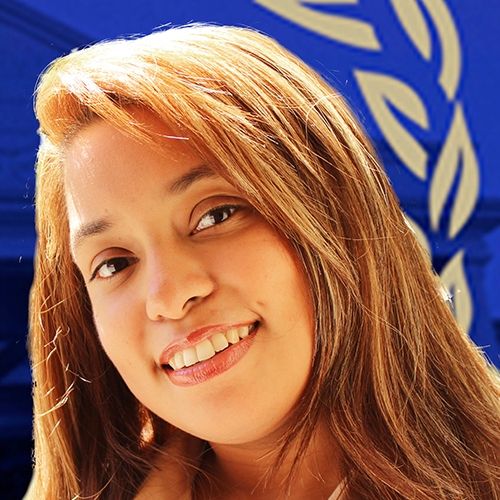

Haaritha Boltman-Binkowski completed her B. Cur (Cum Laude) at the University of the Western Cape in 2003. She then gained clinical experience in both private and government institutions in the labour ward. She completed her Masters degree in Advanced Midwifery in 2005. In 2007 she started working as a lecturer at the University of the Western Cape. During the 13 years of lecturing, she has lectured various disciplines, including General Nursing, Midwifery, Advanced Midwifery, Neonatal Nursing, Research Methods, and Gender Based Violence as a Public Health Issue. She has co-ordinated both theory and clinical for many of the modules and year levels taught. Since 2015, Haaritha has been co-ordinating and teaching the Masters in Nursing: Advanced Midwifery and Neonatal Nursing. Haaritha is passionate about collaboration and has organised two international collaborative visits in 2019 from different institutions in Belgium (UC Leuven and VIVES), and has been involved with NEPAD efforts since 2012. In 2019 she graduated with another Masters degree in Nursing Education (Cum Laude). Her curriculum development experience covers micro aspects as well as developing the new graduate programme in Midwifery. Her clinical and teaching experience is as varied as her research interests but her focus areas are: maternal and child health, evidence-based practice, postpartum haemorrhage, teaching and learning and decolonisation.
Objective 2 :Describe the descriptors for a diagnosis of Postpartum Haemorrhage.
Objective 3: List non-pharmacological methods of treating Postpartum Haemorrhage.
Postpartum haemorrhage (PPH) is one of the most preventable causes of maternal death, yet it still ranks as one of the main conditions responsible for maternal mortality. PPH has serious adverse effects on maternal health including death, adult respiratory distress syndrome, coagulation disorders, shock, hysterectomy and loss of fertility. As bleeding after delivery is expected, women often do not realize the seriousness of their condition until it is too late and often do not survive to be referred to a more specialized level of care.
The diagnosis and management of PPH is complex, with the main challenge being the visual assessment of blood loss. As women are not able to warn healthcare providers timeously about their condition, the situation is compounded by poor clinical assessments, a lack of accuracy in diagnosis, lack of resources, and differing methods of treatment . Most of the primary maternity care in South Africa is provided by midwives, and the overall quality of care during the management of PPH is poor. In addition, the scope of practice of midwives is limited. Unless a registered midwife has a prescribing license, they may not administer any medications, with the exception of oxytocin. Midwives may also not perform any surgical interventions.
The purpose of this presentation will be to present evidence-based, effective, non-pharmacological methods of treating postpartum haemorrhage, which primary care midwives may find valuable in their practice.


Nathan Riley, MD, is an OBGYN and hospice physician in Louisville, KY. He also works remotely as a telehealth palliative care physician for Resolution Care. He is also the host of the Obgyno Wino Podcast (link to: www.obgynowino.com), and, later this year, he will be launching a biodynamic wellness service to address the multitude of women's health issues for which Western medicine is not equipped to manage (link to: www.belovedholistics.com). When he's not connecting with his patients, you can find him mountain biking, climbing, gardening, or tossing his daughter dangerously high in the air.
Objective 1: Describe the pathway of oxygen from the external environment to the fetus in order to identify how this pathway may be disrupted and detected through available fetal surveillance methods.
Objective 2: Interpret the results of a non-stress test and provide counsel to the pregnant family based on those results.
Objective 3: Explain the physiology of amniotic fluid and how to reliably assess it with ultrasound.
Attendees will come to understand the underlying physiology behind antenatal surveillance methods, including non-stress testing, biophysical profiling, amniotic fluid assessment, and fetal Doppler velocimetry. Many pregnant families have difficulty understanding the nature of antenatal fetal surveillance, and have even more challenge deciphering the results. This lecture will help practitioners effectively counsel pregnant patients on result interpretation and provide tools to help families make educated decisions based on the antenatal fetal surveillance results.


Naida Hawkins is a Registered Nurse and Lactation consultant in North Battleford, Saskatchewan. She is a passionate registered nurse who has cared for breastfeeding families for 14 years.
Almereau Prollius is an Obstetrician and Gynecologist in Saskatoon, SK. Together with Naida they have a special interest in strategies to promote successful breast feeding and are advocates of prenatal hand expression. They work as part of an interdisciplinary team supporting families to have an easier time starting and continuing breastfeeding.
More Milk Sooner is their program which supports and promotes hand expression in the antenatal and early postpartum period. Based out of Saskatoon and North Battleford in Saskatchewan, they hope to empower patients and care providers to increase successful breastfeeding. They are delighted to be sharing their journey with you. They are actively involved in research reviewing the outcomes of the implementation of the prenatal hand expression education strategy.
Objective 1. Describe the use of prenatal hand expression (PHE) in the prenatal and early post-partum period.
Objective 2. Discuss opportunities for implementing PHE into practice.
Objective 3. Design a program for empowering patients to increase breastfeeding rates.
Exclusive breastfeeding for the first six months of life is currently recommended by numerous health authorities including the World Health Organization and UNICEF, and should be encouraged and supported prenatally, perinatally and postpartum. Despite these recommendations, the rate of sustained breastfeeding to six months of life remain low. Prenatal hand expression (PHE) is a method used to assist with colostrum collection beginning near term pregnancy. This technique is low-cost and easy to teach and learn. It has been shown to reduce problems with milk stasis, mastitis and breast engorgement by mobilizing colostrum and breastmilk. Learn more about how this technique can improve breastfeeding exclusivity and duration and how to implement it in your practice.


An inspiring international teacher and published author, Jan Tedder is a nurse practitioner and lactation consultant who was honored as the NC Maternal-Child Nurse of the Year and the recipient of the American Nurses Association’s 2020 Innovative Nurse Award. Jan worked in primary care for decades and trained nurses and physician residents in well-child care and lactation support. She developed HUG Your Baby, an international education program to help parents and the professionals who serve them, understand a child’s behavior and help mothers meet their breastfeeding goals. Available in six languages, her work has been accessed by thousands of professionals around the world used in 50 countries and tribal nations.
Objective 1. Describe the importance of Responsive Parenting.
Objective 2. List two examples of behaviors commonly misunderstood as a breastfeeding or parenting problem.
Objective 3. Describe two ways midwives might enhance parent's understanding of infant behavior.
Research confirms that misunderstanding a baby’s behavior decreases breastfeeding duration, lowers parent confidence and increases stress and postpartum depression. Literature on “Responsive Parenting” confirms how learning to notice, understand and respond appropriately to a baby’s behavior positively impacts early parenting, breastfeeding duration and the growth and development of a baby. Midwives are uniquely positioned to enhance a family’s ability to meet their parenting and breastfeeding goals. However, other research suggest that information provided patients does not always meet the needs of today’s young families. This presentation reviews efficient, cost-effective tools, tips and techniques that foster “Responsive Parenting”, boost the confidence of new parents and help families meet their breastfeeding goals.
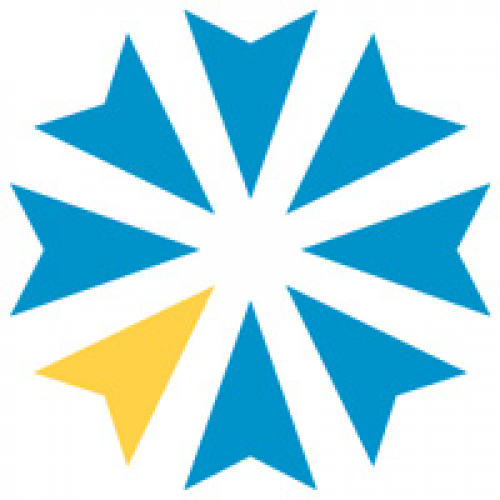

Haaritha Boltman-Binkowski completed her B. Cur (Cum Laude) at the University of the Western Cape in 2003. She then gained clinical experience in both private and government institutions in the labour ward. She completed her Masters degree in Advanced Midwifery in 2005. In 2007 she started working as a lecturer at the University of the Western Cape. During the 13 years of lecturing, she has lectured various disciplines, including General Nursing, Midwifery, Advanced Midwifery, Neonatal Nursing, Research Methods, and Gender Based Violence as a Public Health Issue. She has co-ordinated both theory and clinical for many of the modules and year levels taught. Since 2015, Haaritha has been co-ordinating and teaching the Masters in Nursing: Advanced Midwifery and Neonatal Nursing. Haaritha is passionate about collaboration and has organised two international collaborative visits in 2019 from different institutions in Belgium (UC Leuven and VIVES), and has been involved with NEPAD efforts since 2012. In 2019 she graduated with another Masters degree in Nursing Education (Cum Laude). Her curriculum development experience covers micro aspects as well as developing the new graduate programme in Midwifery. Her clinical and teaching experience is as varied as her research interests but her focus areas are: maternal and child health, evidence-based practice, postpartum haemorrhage, teaching and learning and decolonisation.
Dr. Ruth Oshikanlu MBE is a multi-award winning nurse, midwife and health visitor. A nurse entrepreneur, consultant, leader and parenting expert, she is passionate about supporting vulnerable children and their families to reduce health inequalities and improve their life outcomes. Her previous roles include: HIV specialist midwife, Family Nurse at one of the first pilot sites of The Family Nurse Partnership intensive home visiting parenting programme for vulnerable families, and Nurse Leader of The Lewisham Young People’s Health and Wellbeing Service.
Ruth is a Pregnancy Mindset Expert and supports pregnant women who have had assisted conception or previous pregnancy loss. She is the author of Tune In To Your Baby: Because Babies Don’t Come with An Instruction Manual.
Ruth is a Queen’s Nurse, Fellow of The Institute of Health Visiting, Royal College of Nursing and The Royal Society of Arts. She is the recipient of several national healthcare and business awards; a regular columnist and has published several feature articles in numerous national nursing and healthcare journals.
Ruth was appointed a Member of the Order of the British Empire (MBE) in the New Year 2019 Honours List for being an Ambassador for the Health Visiting Profession and for services to Community Nursing, Children and Families. She is a Churchill Fellow and was awarded an honorary doctorate degree from London South Bank University in November 2019.
Stephanie Tillman (she/her) is a midwife at the University of Illinois at Chicago. She completed her undergraduate degree in Global Health and Medical Anthropology at the University of Michigan, and her graduate degree in Midwifery at Yale University. She is on the Boards of Directors of Nurses for Sexual and Reproductive Health (NSRH) and the Midwest Access Project (MAP), is an Advisory Committee Member of the Queer and Transgender Midwives Association (QTMA), and is a member of the ACNM Ethics Committee. She is currently a Clinical Medical Ethics Fellow at the University of Chicago's MacLean Center, where she is focusing on consent in intimate exams. Stephanie blogs under the name Feminist Midwife, and through that online platform, academic and public writing, and professional speaking engagements, seeks to interact with providers and consumers in conversations about consent in health provision, queer care, sex positivity, nurses and advanced practice clinicians in abortion care, and trauma-informed frameworks. Find her on social media @FeministMidwife.
Objective 1: Discuss the impact of policies and procedures implemented during the pandemic on birthing families.
Objective 2: Discuss the impact of direct and vicarious trauma on care providers.
Objective 3: Identify ways in which the pandemic impacts the ability of care providers to provide compassionate care.
The emergence of the global COVID-19 pandemic brought with it an unprecedented impact on birthing families and their care providers. The upheaval and uncertainties associated with changing policies and procedures, the challenges of shifting certain aspect of care to the virtual world, and the trauma experienced by birthing parents, babies and care providers alike, will have long lasting effects. This panel brings together midwives from different areas of the world to discuss the impact of COVID-19 on parents, babies, and care providers and the implications for the profession moving forward.
Accreditation
Midwifery CEUs (MEAC Schools): This program is approved for Midwifery CEUs through the Midwifery Education & Accreditation Council equivalent to 13.5 hours. CEUs are applicable for Certified Professional Midwives recertifying through the North American Registry of Midwives (NARM).
CERPs - Continuing Education Recognition Points Applicable to IBCLC Lactation Consultants, Certified Lactation Consultants (CLCs), CBEs, CLE, Doulas & Birth Educators. This program us approved for 13.5 CERPs (11.5 R-CERPs, 2 L-CERPs) GOLD Conferences have been designated as a Long Term Provider of CERPs by the IBLCE--Approval #CLT114-07
If you have already participated in this program, you are not eligible to receive additional credits for viewing it again. Please send us an email to [email protected] if you have any questions.
Tags / Categories
(IBCLC) Education and Communication, (IBCLC) Equipment and Technology, (IBCLC) Infant, (IBCLC) Maternal, (IBCLC) Pharmacology and Toxicology, (IBCLC) Psychology, Sociology, and Anthropology, (IBCLC) Techniques, Birth Practices & Breastfeeding, Birth, Pregnancy & COVID, Birth, Pregnancy & Postpartum Around the World, Decision Making & Consent, Fear of Childbirth, Hand Expression & Breast Massage, Hemorrhage and Blood Loss, Labour & Positioning, Labour Progression, Maternal Illness, Monitoring, Parent & Infant Bonding, Peer Support for Breastfeeding, Postpartum Care
How much time do I have to view the presentations?
- The viewing time will be specified for each product. When you purchase multiple items in your cart, the viewing time becomes CUMULATIVE. Ex. Lecture 1= 2 weeks and Lecture Pack 2 = 4 Weeks, you will have a total of 6 weeks viewing time for ALL the presentations made in that purchase.
- Time for viewing the talks begins once you purchase the product. For Live Webinars & Symposiums, the viewing period begins from when the live event takes place. Presentations can be accessed 24/7 and can be viewed as many times as you like during the viewing period.
What are bundled lectures?
- Presentations may be available individually or via a bundled package. Bundled lectures are a set of lectures that have been put together based on a specific category or topic. Some lectures will be available in both individual and lecture form, whereas others will be available only via a bundled lecture pack.
Will there be Handouts?
- YES! Each lecture comes with a PDF handout provided by the Speaker.
Some lectures include a Q&A, what does that mean?
- During our online conferences, presentations that occur live are also followed by a short 15 minute Question & Answer Session. The Speaker addresses questions that were posted by Delegates during the presentation. We include the recording of these Q&A Sessions as a bonus for you.
How can I receive a Certificate?
- If this presentation offers a certificate, once you are done viewing the lecture or the lectures within a bundle, submit your attendance record in order to be able to download your certificate. You'll be able to see which credits are offered for the lecture by hovering over the "Credits Available" link within the "Speakers & Topics" tab.
Professionals that selected this package also viewed

|
|

|














